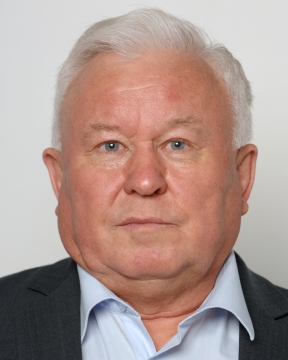 |
Dr. Vladimir TsepelevBoris Yeltsin Ural Federal UniversityEffect Of Inhibitors On The Structure And Magnetic Properties Of Nanocrystalline Magnetically Soft Iron-based Alloys 11th Intl. Symp. on Advanced Sustainable Iron & Steel Making Back to Plenary Lectures » |
Abstract:Nanocrystalline soft magnetic materials are widely used in the manufacture of magnetic systems of transformers, electric reactors, chokes, and other devices . High magnetic permeability and low magnetic losses are provided by the nanosized crystal structure of the materials [1]. In the material of the Finemet type with the chemical composition of Fe73.5Cu1Nb3Si13.5B9, the average size of Fe-Si crystallites is of the order of 10 nm [2]. Such a structure is formed in the course of amorphous precursor crystallization, which is produced using the technology of rapid quenching from the melt. In this alloy, Nb is used for inhibition of grain growth. Other elements can also find their application as inhibitors and they can be arranged in the order of increasing the efficiency of grain refinement: Cr, V, W = Mo, Nb = Ta, Zr. The Fe73.5Cu1M3Si13.5B9alloys where M = Nb, W, Mo, V, Cr were melt in a vacuum induction furnace. A 25 μm thick and 10 mm wide ribbon with the amorphous structure was produced by the planar flow casting process. The ribbon was wound up onto ring-type cores with the 32 mm outer diameter and 20 mm inner diameter. The cores were subjected to annealing at the temperature Ta = 823 К. The thermomagnetic analysis was performed with the simultaneous recording of the temperature inside the core by a thermocouple and the inductance of the winding wound over the core. The initial permeability μ was calculated based on the inductance measurements at 1 kHz. The structural state of specimens was studied using transmission electron microscopy on a JEM 200CX microscope. The data for calculating the average size of grains and histograms of the size distribution was received based on the results of processing of the dark-fields images of 300 grains. X ray analysis was performed on a diffractometer D8 DISCOVER in copper radiation (Cu Kα1,2) with the Bragg-Brentano focusing device and graphite monochromator at the diffracted beam. The processing of data was carried out with the use of analytical FullProf program TOPAS 3. When estimating the average size of crystallites, the correction coefficient К = 0.89 was employed in the Sherrer equation. The volume fraction of amorphous phase was estimated based on two diffusion maxima. The error of determination of the lattice parameter a for Fe3Si made up 0.0005 nm. The paper presents the result of investigation of physical origin of different efficiency of impact that inhibitors exert on the structure and magnetic properties of nanocrystaline alloys Fe73.5Cu1M3Si13.5B9 where M = Nb, W, Mo, V, Cr. It is shown that the efficiency is directly related to the solubility of inhibitory elements in αFe, which in turn affects the diffusivity of atoms. Upon slow migration of grain boundaries, the inhibitory atoms with a lower diffusivity, being concentrated near the front of moving boundary, provide a stronger drag [3]. The weakening of the effect manifests itself in the lowering of the onset temperature of crystallization, as well as in the increase in the rate of elevating temperature and in the peak temperature of the core heating. This in turn results in the increase in the grain size and volume fraction of stable crystalline phases. |
|